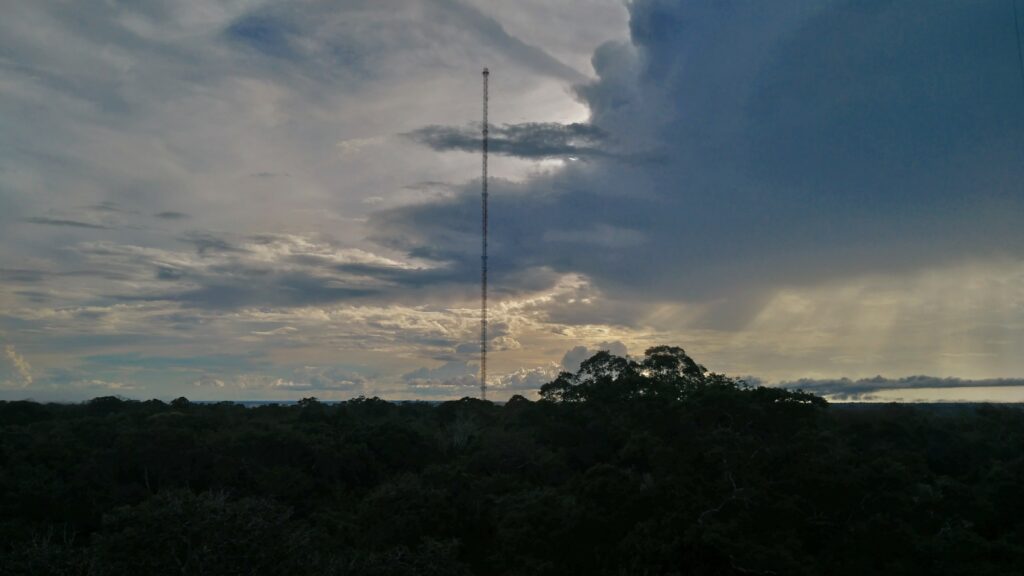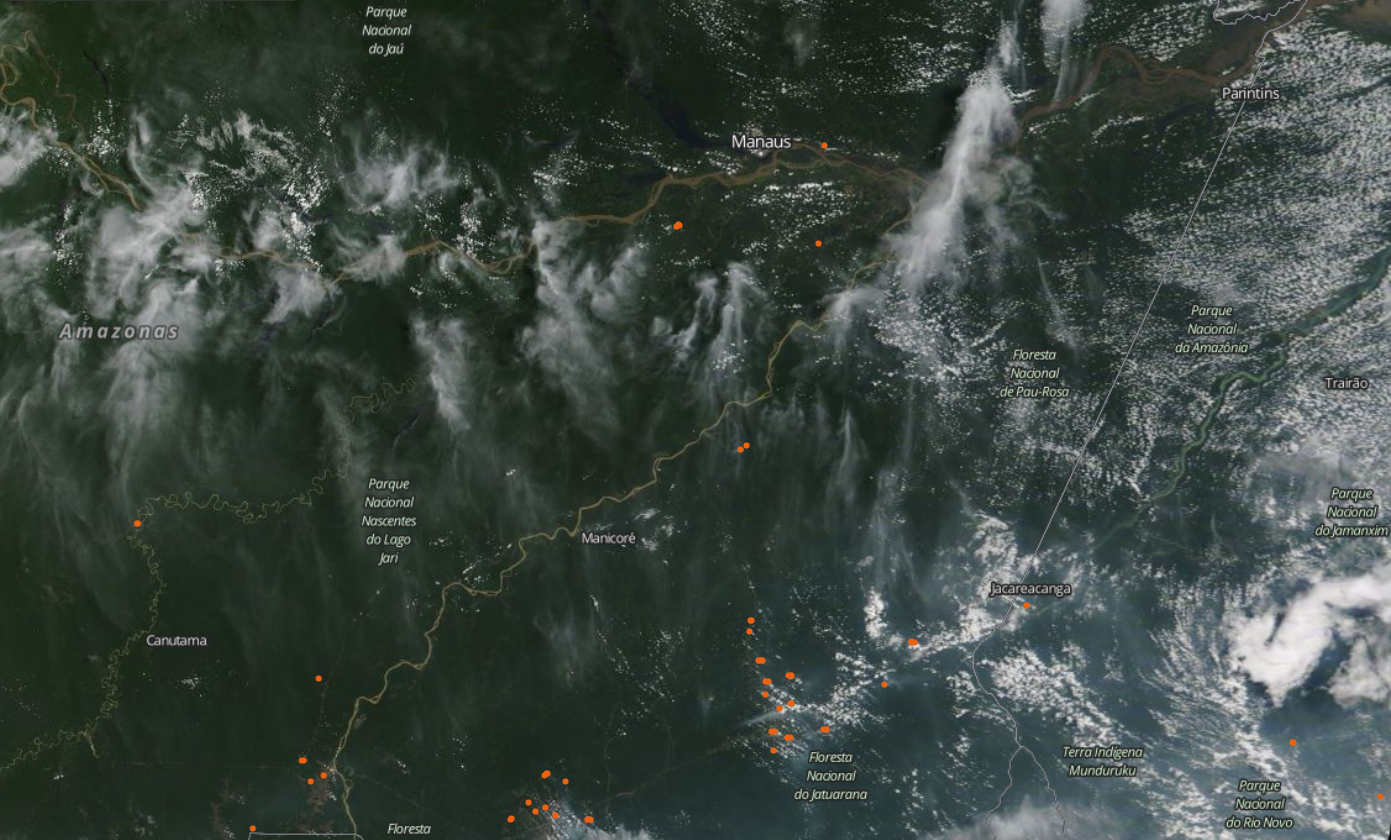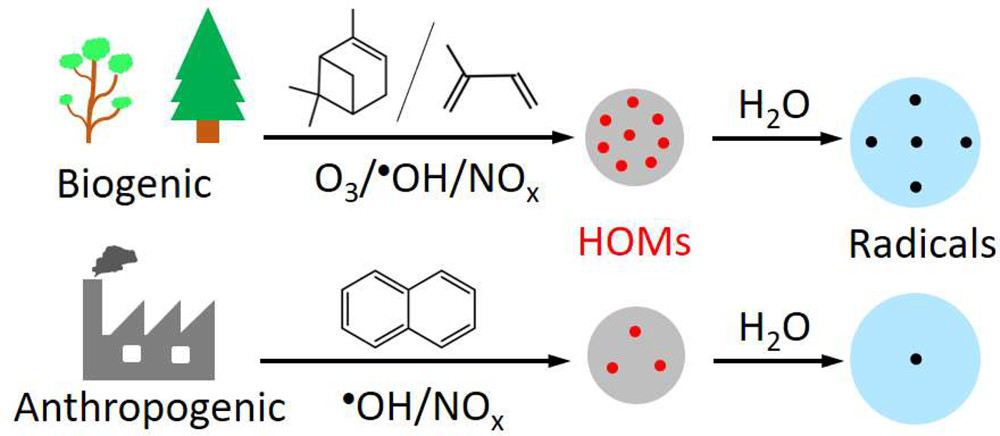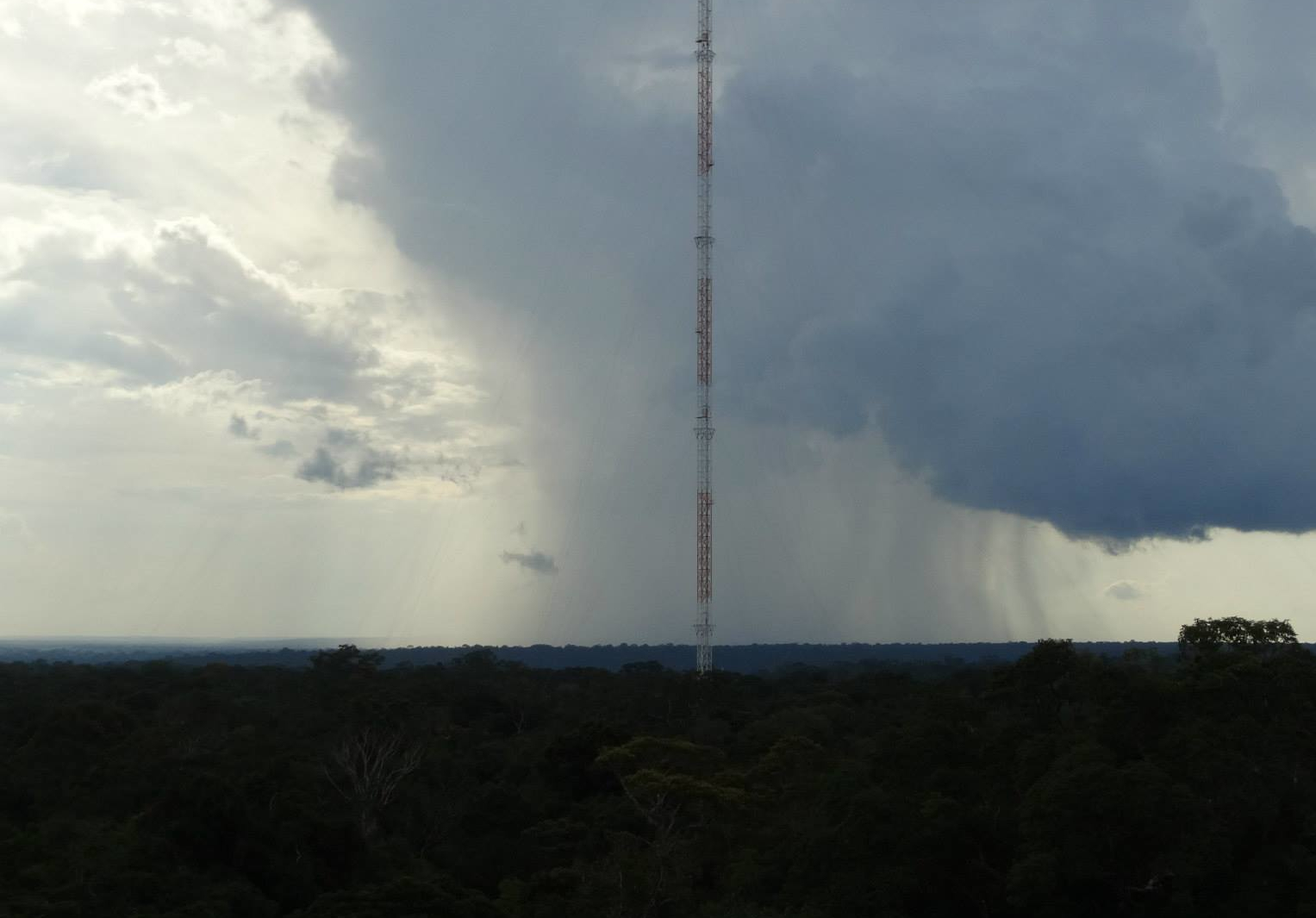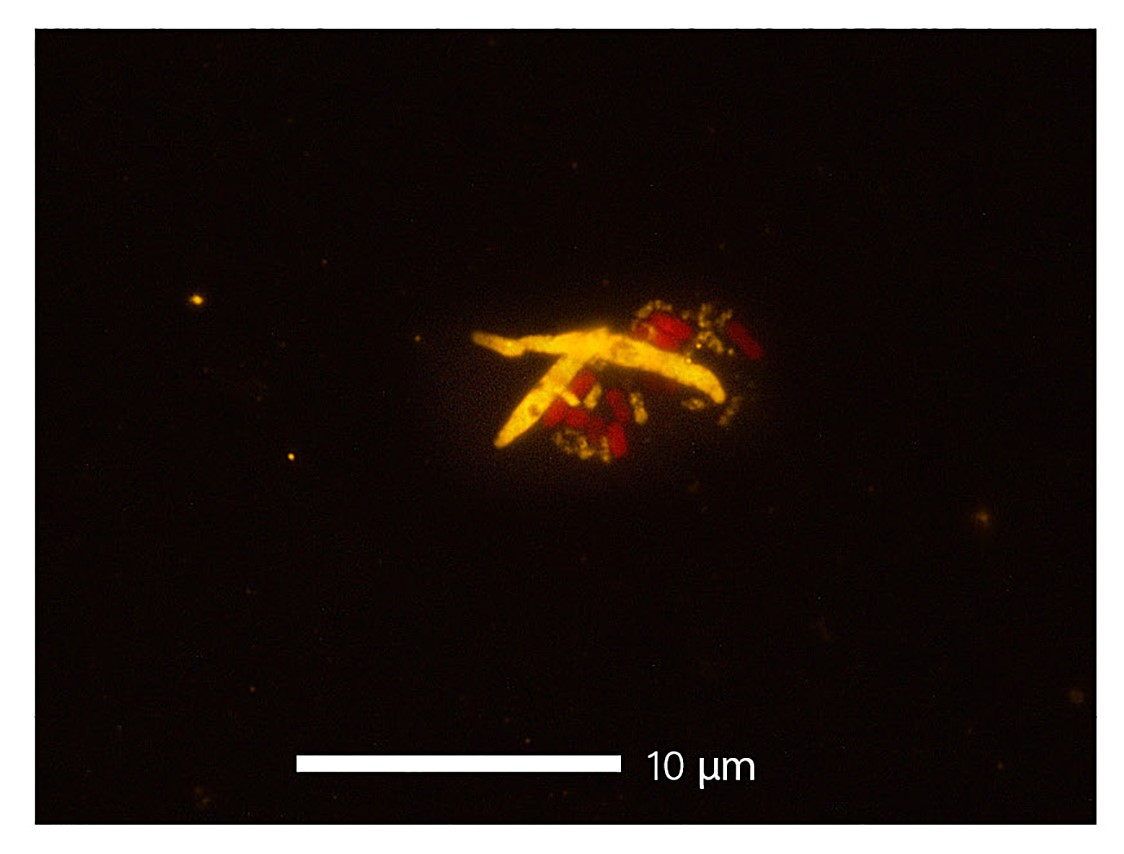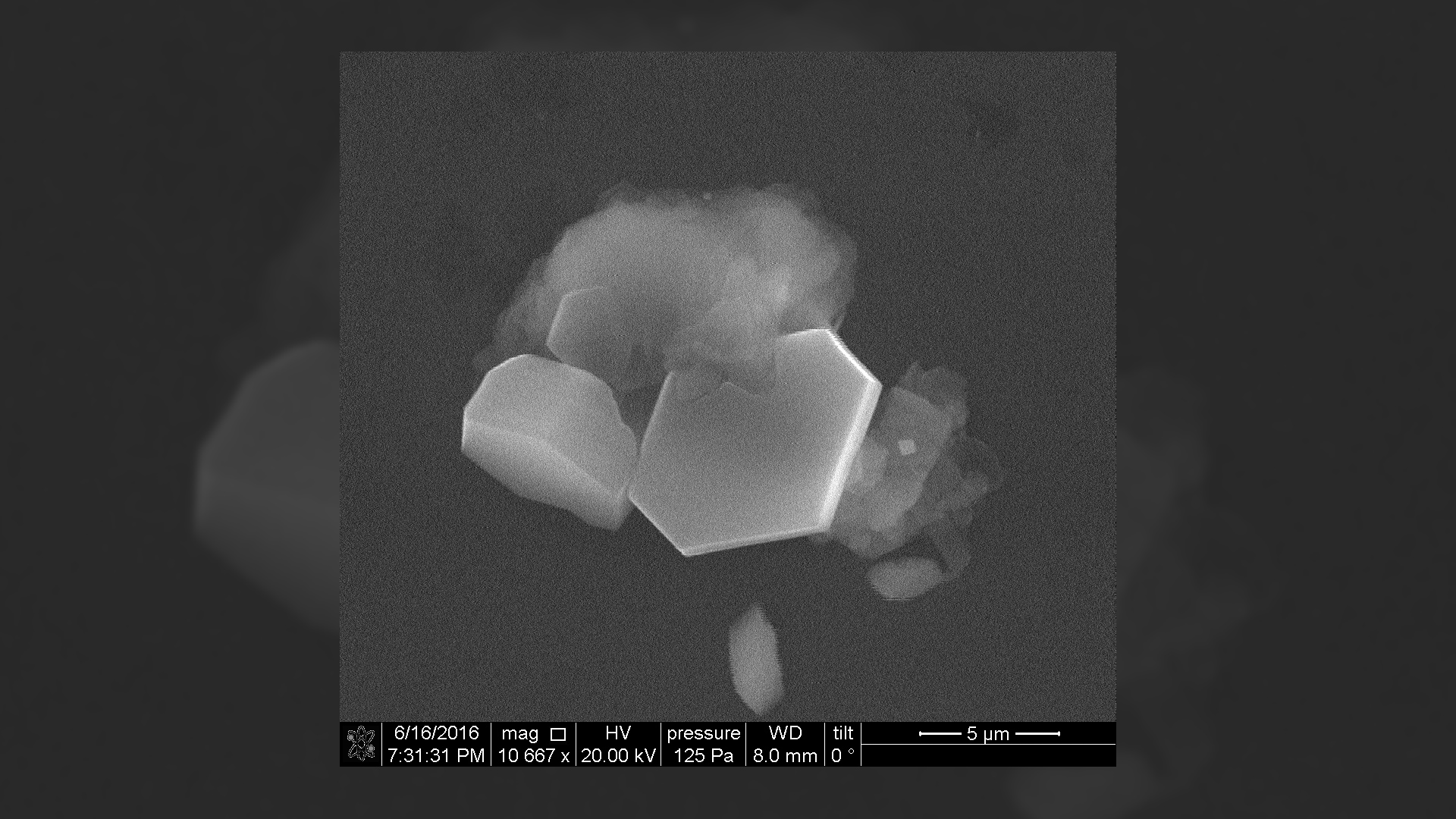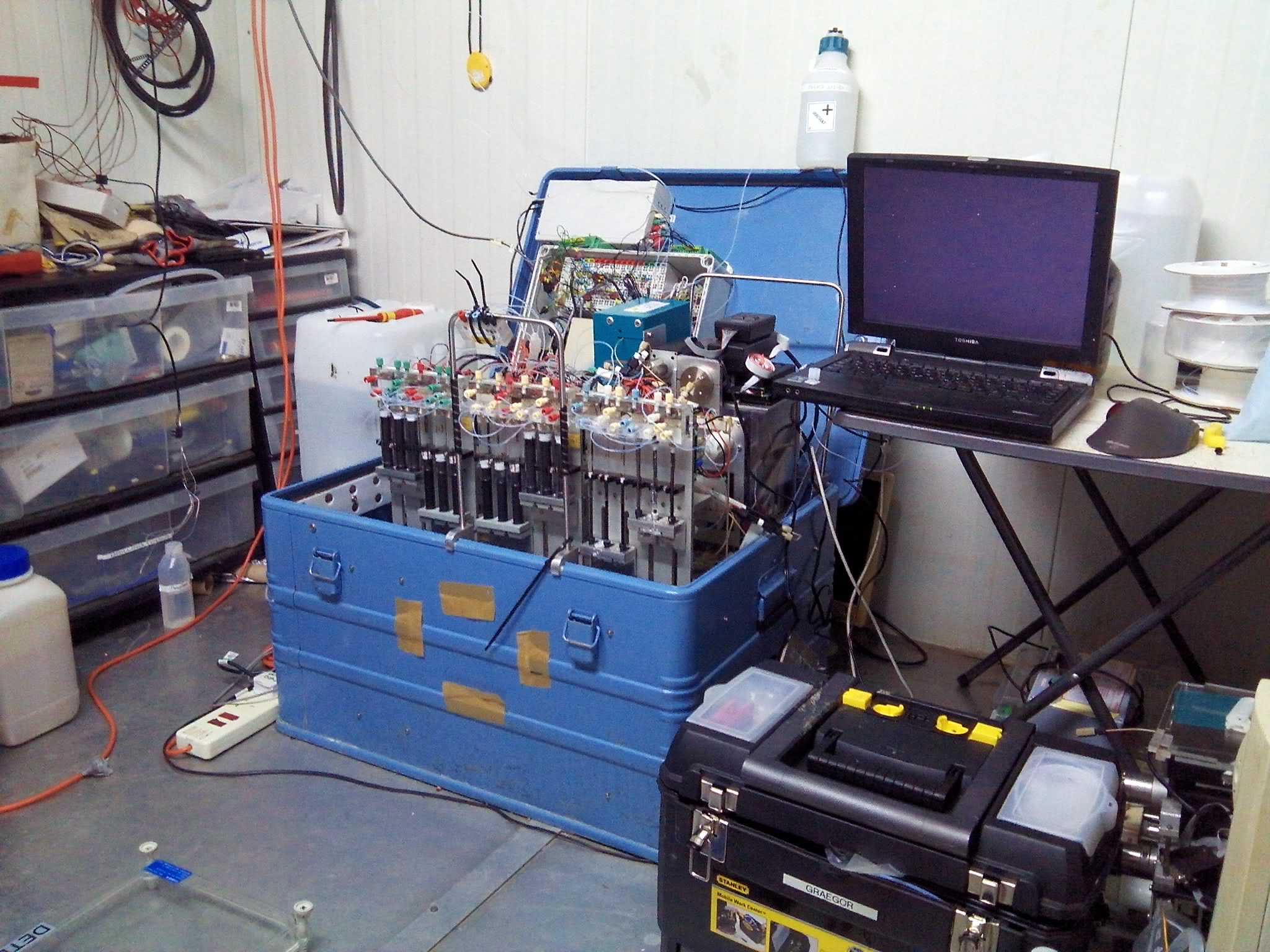Particle formation and particle growth
For rain, we need clouds. And for clouds, we need both water vapor and particles for this water vapor to condense on. But not just any particles. Cloud condensation nuclei need to be of a certain size, at least something around 80 nanometers (nm). There are some particles floating in the air that already are this large, like soot particles, or biological particles like fungi and certain viruses (the coronavirus has a diameter of ca. 100 nm). But most particles are much smaller, and grow larger while they are in the atmosphere. This process is called “new particle formation”. Even gas molecules can form clusters of this size through growth. Studies looking at aerosols and cloud formation even suggest that new particle formation might be the dominant source of particles contributing to cloud formation, in particular in the central Amazon.
This particle growth, however, does not happen continuously over time, but rather in defined events and under specific conditions. The details of how these processes work are still a matter of ongoing research. This is especially true for the Amazon region, where new particle formation inside the planetary boundary layer (the lowermost ≈1-2 km of the atmosphere) appears to be much less frequent than in other areas of the world. Instead, studies suggest that new particle formation takes place higher up in the atmosphere, and particles are then brought down with downdrafts in convective clouds.
Therefore, Marco A. Franco and his colleagues set out to analyze a long time series of the aerosol number size distribution of more than six years. In addition, they measured numerous meteorological parameters to identify possible connections to aerosol growth events. Understanding these processes better is important to be able to predict how climate change might impact Amazonian forests, as cloud formation is an essential process for rain and thus, for maintaining rainforests. They did this study with data from ATTO, where the atmosphere is comparably clean and largely free of anthropogenic pollution.
Growing in cycles
The research team did not detect new particle formation itself, but aerosol particle growth events. These particles were, however, not newly formed, but had already aged and grown to a medium-size between 10 and 50 nm. The subsequent growth events occurred on average only once a week, i.e. on 14 percent of analyzed days. However, this did not happen uniformly at all. Instead, the scientists found pronounced daily and seasonal cycles. Marco A. Franco and his colleagues noticed in their data that most particle formation events happened in the morning hours. The peak around 7 am emphasizes the role of sunlight and changing atmospheric conditions over the course of the day. Remarkably though, they were also able to detect particle growth events at night. Further research is needed to understand the mechanisms driving this growth.
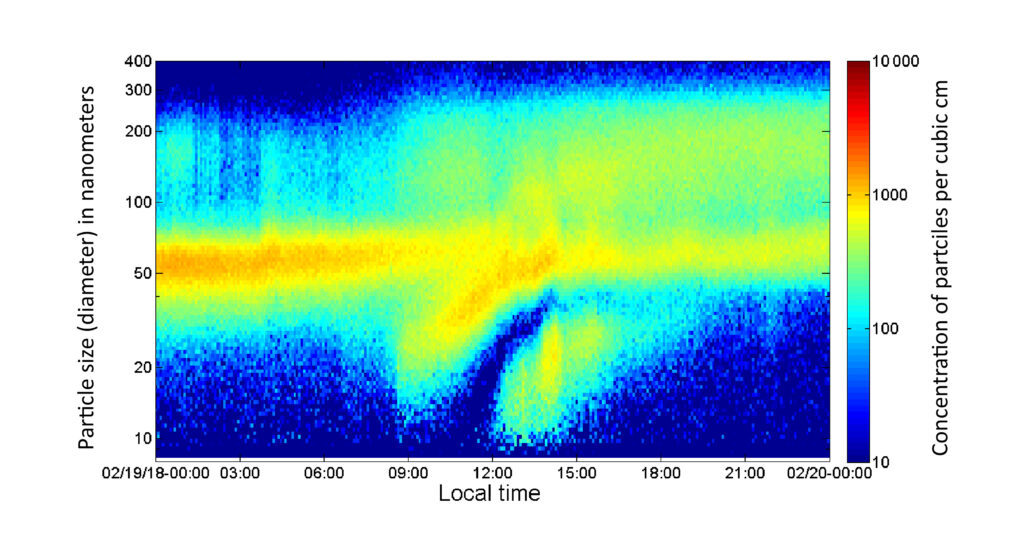
They also discovered that the large majority of particle growth events took place during the wet season. In those months, thunderstorms are very frequent and are associated with downdrafts of air from higher atmospheric layers, which was corroborated by Machado et al., 2021. And indeed, almost three-quarters of the particle formation events took place in the presence of storm clouds. This aligns with previous theories that these downdrafts bring in medium-sized particles, which then continue to grow to a size relevant for cloud formation.
However, some 30 % of events took place in the absence of convection. Therefore, for around one-third of particle formation events, there has to be a source for particles other than downdrafts from higher atmospheric layers. To unveil those sources and processes, we need future studies, as they contribute significantly to particle growth events and thus cloud formation in the Amazon rainforest.
Marco A. Franco and his co-authors published the study “Occurrence and growth of sub-50nm aerosol particles in the Amazonian boundary layer” Open Access in the journal Atmospheric Chemistry and Physics.
Similar articles
Soot and other aerosols from biomass burning can influence regional and global weather and climate. Lixia Liu and her colleagues studied how this affects the Amazon Basin during the dry season. While there are many different interactions between biomass burning aerosols and climate, they found that they overall lead to fewer and weaker rain events in the Amazon rainforest.
In a new study, Dr. Haijie Tong and co-authors studied a subset of PM2.5, the so-called highly oxygenated molecules (HOMs) and its relationship with radical yield and aerosol oxidative potential. They analyzed fine particulate matter in the air in multiple locations. This including the highly polluted megacity Bejing and in the pristine rainforest at ATTO. They wanted to get insights into the chemical characteristic and evolutions of these HOM particles. In particular, they wanted to find out more about the potential of HOMs to form free radicals. These are highly reactive species with unpaired electrons.
Luciane Reis and her colleagues now performed a new study at the ATTO site that shows that gust fronts can also cause large jumps in carbon dioxide concentrations. But what are the sources of this carbon-dioxide-rich air?
Atmospheric aerosol particles are essential for the formation of clouds and precipitation, thereby influencing the Earth’s energy budget, water cycle, and climate. However, the origin of aerosol particles in pristine air over the Amazon rainforest during the wet season is poorly understood. A new study reveals that rainfall regularly induces bursts of newly formed nanoparticles in the air above the forest canopy.
More soot particles enter the central Amazon rainforest from brush fires in Africa than from regional fires at certain times.
It is long known that aerosols, directly and indirectly, affect clouds and precipitation. But very few studies have focused on the opposite: the question of how clouds modify aerosol properties. Therefore, Luiz Machado and his colleagues looked into this process at ATTO. Specifically, they studied how weather events influenced the size distribution of aerosol particles.
The Amazon rain forest plays a major role in global hydrological cycling. Biogenic aerosols, such as pollen, fungi, and spores likely influence the formation of clouds and precipitation. However, there are many different types of bioaerosols. The particles vary considerably in size, morphology, mixing state, as well as behavior like hygroscopicity (how much particles attract water) and metabolic activity. Therefore, it is likely that not only the amount of bioaerosols affects the hydrological cycle, but also the types of aerosols present.
Bioaerosols may act as cloud condensation nuclei and ice nuclei, thereby influencing the formation of clouds and precipitation. But so far there is less knowledge about the ice nucleation activity of each bioaerosol group and atmospheric models hitherto have not differentiated between them. Patade et al. created a new empirical parameterization for five groups of bioaerosols, based on analysis of the characteristics of bioaerosols at ATTO: fungal spores, bacteria, pollen, plant/animal/viral detritus, and algae. This makes it possible for any cloud model to access the role of an individual group of bioaerosols in altering cloud properties and precipitation formation.
The majority of global precipitation is formed through the pathway of ice nucleation, but we’re facing large knowledge gaps that include the distribution, seasonal variations and sources of ice-nucleating particles. To fill some of those knowledge gaps, Jann Schrod and his co-authors produced a record of long-term measurements of INPs. They collected data for nearly two years at four different locations. One of those sites was ATTO.
Ramsay et al. measured inorganic trace gases such as ammonia and nitric acid and aerosols in the dry season at ATTO. They are to serve as baseline values for their concentration and fluxes in the atmosphere and are a first step in deciphering exchange processes of inorganic trace gases between the Amazon rainforest and the atmosphere.
Soot and other aerosols from biomass burning can influence regional and global weather and climate. Lixia Liu and her colleagues studied how this affects the Amazon Basin during the dry season. While there are many different interactions between biomass burning aerosols and climate, they found that they overall lead to fewer and weaker rain events in the Amazon rainforest.
In a new study, Dr. Haijie Tong and co-authors studied a subset of PM2.5, the so-called highly oxygenated molecules (HOMs) and its relationship with radical yield and aerosol oxidative potential. They analyzed fine particulate matter in the air in multiple locations. This including the highly polluted megacity Bejing and in the pristine rainforest at ATTO. They wanted to get insights into the chemical characteristic and evolutions of these HOM particles. In particular, they wanted to find out more about the potential of HOMs to form free radicals. These are highly reactive species with unpaired electrons.
Luciane Reis and her colleagues now performed a new study at the ATTO site that shows that gust fronts can also cause large jumps in carbon dioxide concentrations. But what are the sources of this carbon-dioxide-rich air?
Atmospheric aerosol particles are essential for the formation of clouds and precipitation, thereby influencing the Earth’s energy budget, water cycle, and climate. However, the origin of aerosol particles in pristine air over the Amazon rainforest during the wet season is poorly understood. A new study reveals that rainfall regularly induces bursts of newly formed nanoparticles in the air above the forest canopy.
More soot particles enter the central Amazon rainforest from brush fires in Africa than from regional fires at certain times.
It is long known that aerosols, directly and indirectly, affect clouds and precipitation. But very few studies have focused on the opposite: the question of how clouds modify aerosol properties. Therefore, Luiz Machado and his colleagues looked into this process at ATTO. Specifically, they studied how weather events influenced the size distribution of aerosol particles.
The Amazon rain forest plays a major role in global hydrological cycling. Biogenic aerosols, such as pollen, fungi, and spores likely influence the formation of clouds and precipitation. However, there are many different types of bioaerosols. The particles vary considerably in size, morphology, mixing state, as well as behavior like hygroscopicity (how much particles attract water) and metabolic activity. Therefore, it is likely that not only the amount of bioaerosols affects the hydrological cycle, but also the types of aerosols present.
Bioaerosols may act as cloud condensation nuclei and ice nuclei, thereby influencing the formation of clouds and precipitation. But so far there is less knowledge about the ice nucleation activity of each bioaerosol group and atmospheric models hitherto have not differentiated between them. Patade et al. created a new empirical parameterization for five groups of bioaerosols, based on analysis of the characteristics of bioaerosols at ATTO: fungal spores, bacteria, pollen, plant/animal/viral detritus, and algae. This makes it possible for any cloud model to access the role of an individual group of bioaerosols in altering cloud properties and precipitation formation.
The majority of global precipitation is formed through the pathway of ice nucleation, but we’re facing large knowledge gaps that include the distribution, seasonal variations and sources of ice-nucleating particles. To fill some of those knowledge gaps, Jann Schrod and his co-authors produced a record of long-term measurements of INPs. They collected data for nearly two years at four different locations. One of those sites was ATTO.
Ramsay et al. measured inorganic trace gases such as ammonia and nitric acid and aerosols in the dry season at ATTO. They are to serve as baseline values for their concentration and fluxes in the atmosphere and are a first step in deciphering exchange processes of inorganic trace gases between the Amazon rainforest and the atmosphere.
Soot and other aerosols from biomass burning can influence regional and global weather and climate. Lixia Liu and her colleagues studied how this affects the Amazon Basin during the dry season. While there are many different interactions between biomass burning aerosols and climate, they found that they overall lead to fewer and weaker rain events in the Amazon rainforest.
In a new study, Dr. Haijie Tong and co-authors studied a subset of PM2.5, the so-called highly oxygenated molecules (HOMs) and its relationship with radical yield and aerosol oxidative potential. They analyzed fine particulate matter in the air in multiple locations. This including the highly polluted megacity Bejing and in the pristine rainforest at ATTO. They wanted to get insights into the chemical characteristic and evolutions of these HOM particles. In particular, they wanted to find out more about the potential of HOMs to form free radicals. These are highly reactive species with unpaired electrons.


